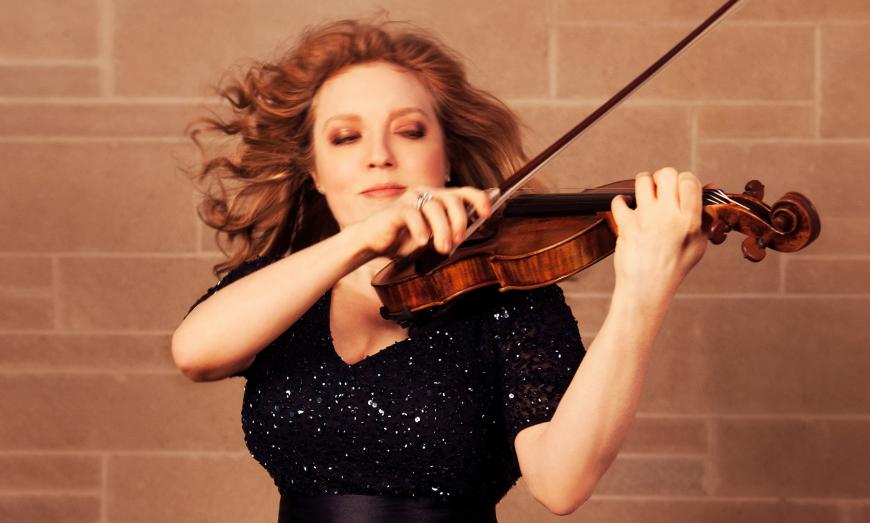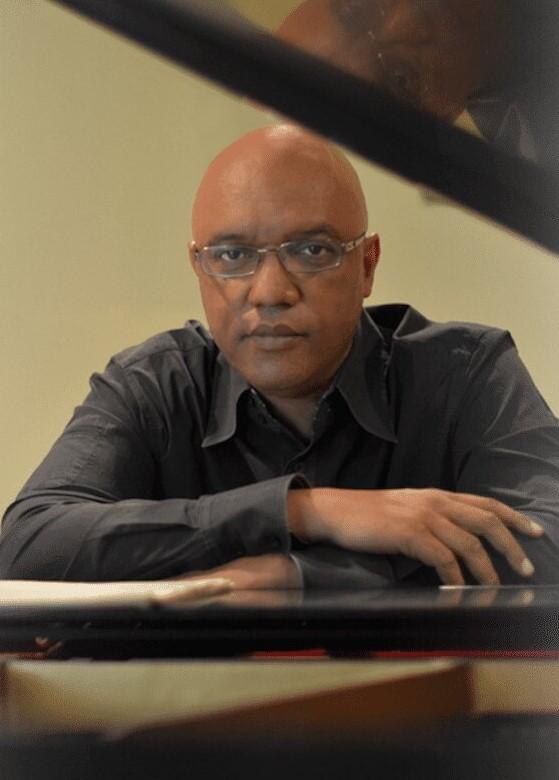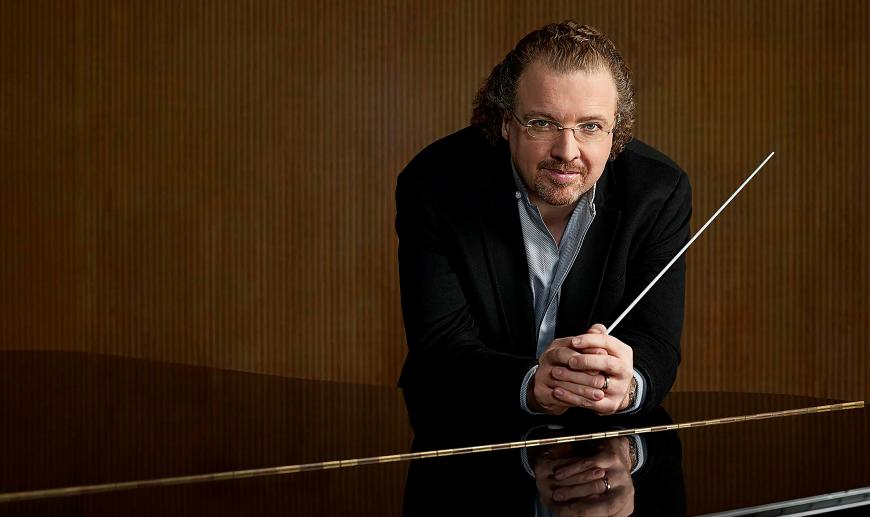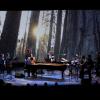
When soloists make their Hollywood Bowl debuts, you usually expect them to trot out the warhorse concertos — Tchaikovsky, Brahms, Beethoven, or something else familiar for the picnickers in the great outdoors. Not Rachel Barton Pine.
In making her belated Bowl debut at age 48 on Thursday night (July 27) with Stéphane Denève and the Los Angeles Philharmonic, the Chicago-based virtuoso violinist chose a relatively new large-scale concerto that had been written for her by jazz pianist and sometime classical composer Billy Childs.
Pine’s enterprising choice shouldn’t be that much of a surprise, though, because her first concerto album, made at age 23, consisted of little-known concertos by Black composers (reissued last year by Cedille with the addition of Florence Price’s Concerto No. 2). That led to her starting a Music by Black Composers initiative through her foundation, which at last count had accumulated more than 900 works by more than 450 different composers. So she’s been into this field big-time for a while, well ahead of the post-George Floyd trend.

Childs’s Violin Concerto No. 2 is laid out like a traditional Romantic concerto in three movements, more or less in a fast-slow-fast sequence, and there is a program of sorts. Childs wrote it during the troubled early days of the COVID pandemic in 2020, when we knew next to nothing about the virus, when there was no vaccine yet, when concert life was shut down, and when other issues like the Floyd murder and impending environmental catastrophe piled on.
According to Childs, the concerto steers a reverse course from the normal progression of emotions after a calamity; the first movement is labeled “Romance/Rejoice,” the second movement “Remorse,” and the finale is “Resilience.” In other words, the acceptance of the situation comes first, then the grief, and finally the anger over what happened and the determination to get through it.
The piece launches in the depths of the lower strings, spreads to the rest of the string section, and gives Pine an opening line that she invested with a sprightly feeling. The tunes are peacefully upholstered by the orchestra, except when the brass come in — then things get rather bombastic. There are hints at dissonance in “Remorse” that become full-blown in the finale, where the technical challenges for the soloist get tougher. The coda is a rapid toccata that goes on and on at a pell-mell pace all the way to the close.
At times, it was difficult to determine exactly where Childs was going structurally within each movement, and the 34-minute concerto probably could benefit from a trim. But Pine — who after some medical setbacks in 2018 now plays seated, arriving onstage on a motorized scooter — sailed through the multiple stops and stretches of perpetual motion unimpeded and with much intensity. Again, it was a bold choice for a Bowl debut, and Pine delivered more of the same in her encore, a swatch of lyrical feeling and virtuoso pyrotechnics from John Corigliano’s score for the film The Red Violin.

Speaking of film, after an effusive spoken tribute to John Williams (who was in the audience), Denève led an excerpt from Williams’s score for The Book Thief, which has poignant tunes lavishly orchestrated with canonic dialogues for string and winds and the composer’s signature doublings of the melody with glockenspiel. It was quite lovely.
None of the above, mind you, would have been known to a casual browser of the 2023 Hollywood Bowl season because the headline description of the concert was simply “Pictures at an Exhibition.” That’s typical of classical websites these days; just state the box-office bait and let ’em hunt for the details. In any case, Modest Mussorgsky’s often-played Pictures at an Exhibition in the usual Maurice Ravel orchestration received a performance that was anything but routine. Each episode was sharply characterized by Denève, who, with hair flying, was very expressive in his gestures, getting audible results. The opening Promenade blazed, “The Old Castle” emerged soulfully, the “Chicks in Their Shells” were prickly and detailed, “Baba Yaga” was vividly animated, and so on. The piece seemed fresh again.



